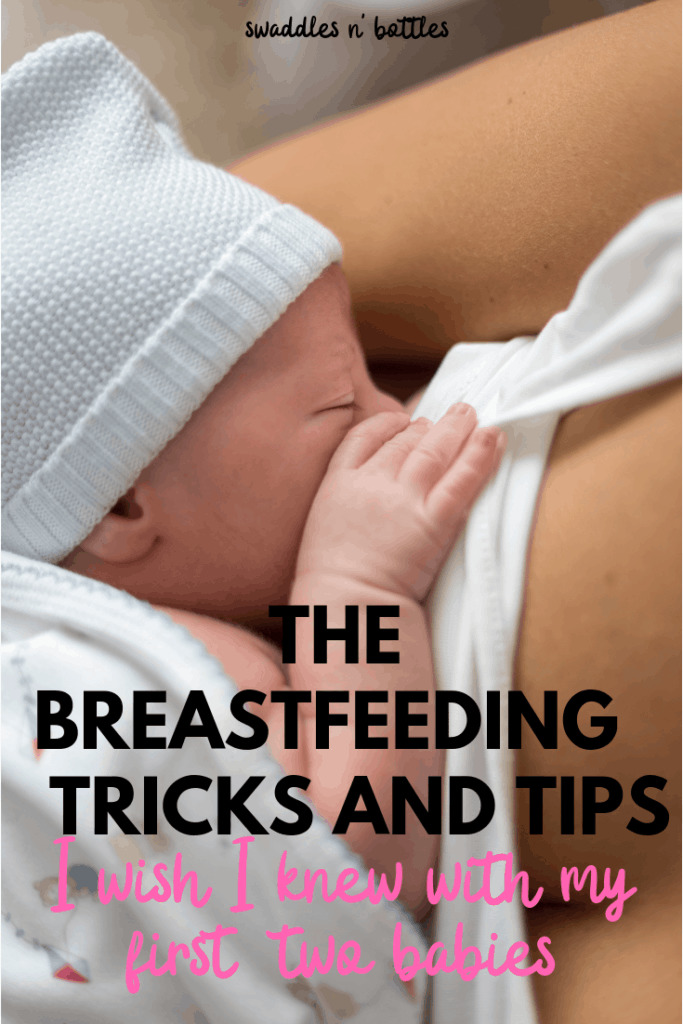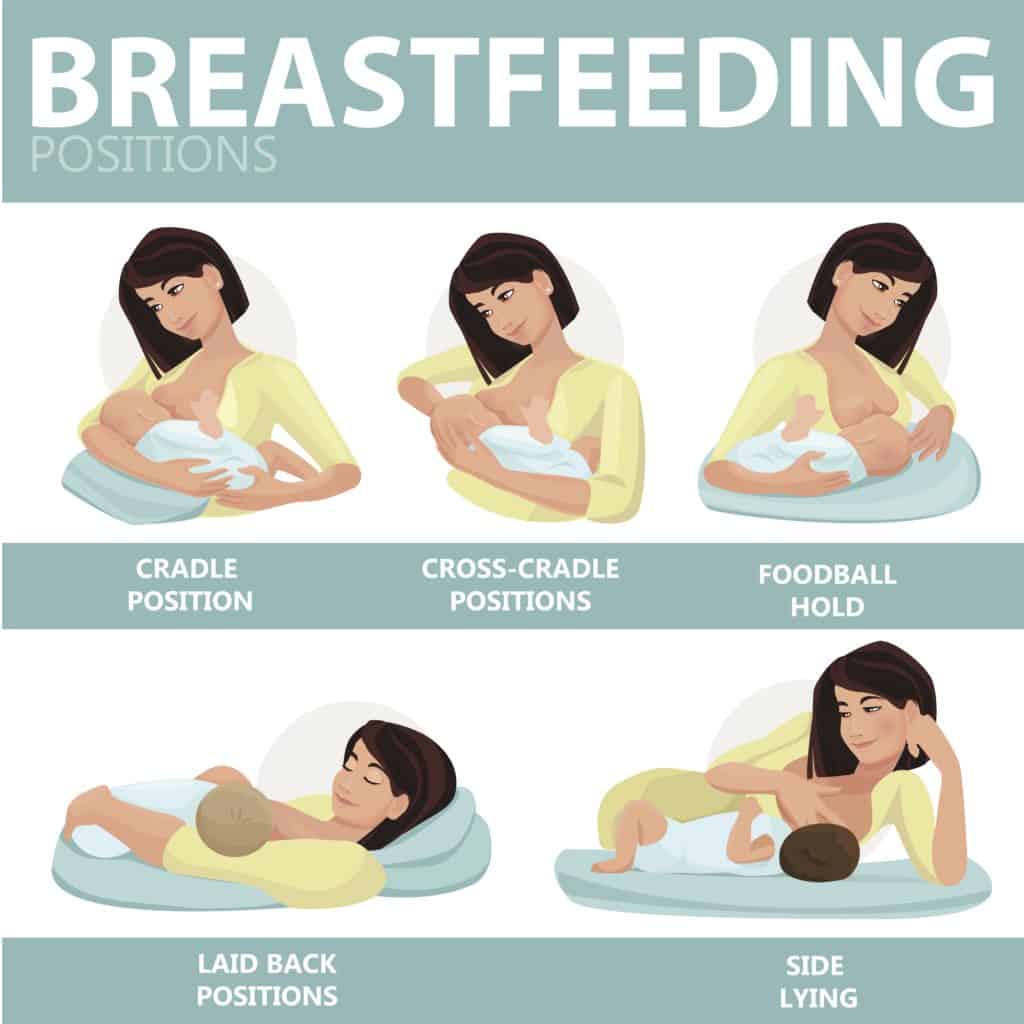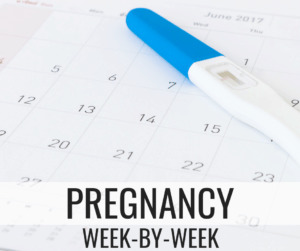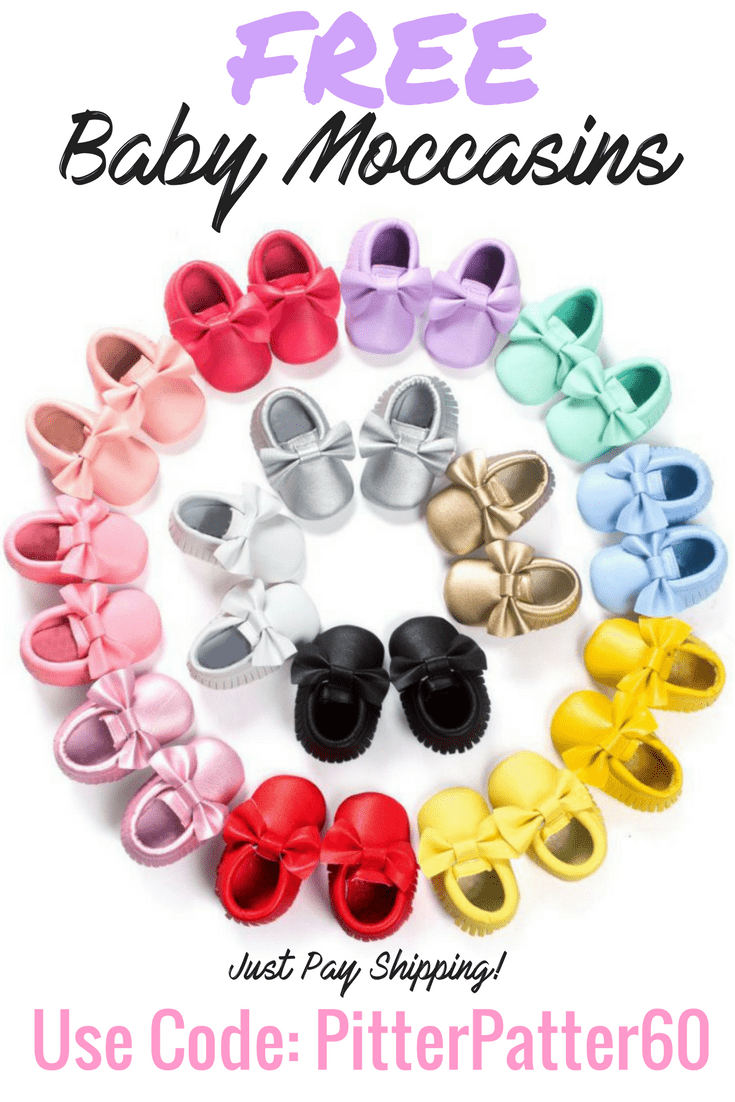
5 Breastfeeding Tricks I Didn’t Know Til I Had My Third Child
I breastfed my first two kids for about three years each, no problem. So, when I had my third child and could barely get her to latch on for the first 36 hours of her life, it was a bit frustrating.
I knew what I was doing, I had six years experience with breastfeeding. I thought I knew all I needed to know, or all there was to know about breastfeeding.
Apparently, that was not the case and there were five tricks to help a newborn breastfeed that I had never heard of before, or seen. Thanks to the lactation consultants at the hospital, I was able to get some colostrum into my newborn before leaving the hospital. Not as much as I, and the nurses and lactation consultants would have liked. But, my third child was very sleepy for the first few days of life.
Before getting to the new tips I learned with my third child, let’s go over what most new moms are advised to do when trying to breastfeed.
As a side note, the nurses and doctors I saw at the hospital said the reason behind my newborn not wanting to nurse, and being so sleepy, was because she had a lot of amniotic fluid in her stomach from such a quick delivery. However, there are many reasons why a newborn may not nurse right away, as well, such as being tongue tied.
Skin to Skin
If you haven’t had your baby yet, I would highly recommend that if you’re able to, to request to hold your newborn immediately after they come out.
Be sure to have skin to skin contact with your newborn and attempt to nurse them as soon as you can. This can help your newborn in many ways.
First, the skin to skin contact and being able to feel your heartbeat, as if they were still safe inside your womb, will help them stay warm, calm, and help them transition to being a newborn.
Attempting to nurse while being skin to skin will encourage their instincts to latch and nurse. This is how it went for me with my second child. The doctor gave me my daughter as soon as she was born and my daughter almost immediately started to nurse, granted, I already knew what I was doing and had almost three years of experience nursing my first child at that point.
Don’t worry that your newborn will be covered in stuff when they are first born. They don’t need a bath before being nursed or being held by their mom. They need their mom first and foremost!
Unfortunately, this is not how it always works out.
With my third child, we had skin to skin contact before her umbilical cord was even cut and I had attempted to nurse her immediately, just like I had with her older sister. She wouldn’t nurse. In fact, she was trying to sleep and needed to be woken up and made to cry to help get some of the amniotic fluid out of her system.
So, if you’re newborn won’t immediately breastfeed after born and having skin to skin contact with you; know that all is not lost, and you can still succeed with breastfeeding.
Positioning Your Baby
Sometimes it’s not when you breastfeed, but the way you hold your baby while breastfeeding. Their positioning on you can make a huge difference in whether or not they will latch and start nursing or not.
If you want to be comfortable while breastfeeding, because you will be breastfeeding quite often if you decide to exclusively nurse and it could be a lot of strain on your back, shoulders, and neck; I highly recommend you invest in a boppy pillow.
I have found that the easiest positioning is the cradle hold; where your babies head is in the bend of your elbow and you’re cradling them. However, this position may not be the easiest for your newborn to nurse in and they may prefer a different position.
Another position is called the football hold, I’ve personally never found this position useful, but every baby is different and will respond to positioning in a different way. For this position, the baby will lay on the side of you with their head towards your breast and feet towards your head; you’ll cradle them with the arm on the same side they are laying on and use your other hand to help them latch.
The first way I was able to easily get my third child to latch and nurse was when we laid side by side on my bed at home. Which was nice because I was so exhausted from having to wake her up every 2 hours and attempt to nurse her.
Another useful position for nursing a newborn, or older infant, is by walking around with them in the cradle position and nursing them. This is very useful for when your infant is having a hard time calming down enough to nurse. Try swaying with them, or gently bouncing with them side to side while attempting to nurse.

If switching positions isn’t helping, then try the suggestions below and ask for help with them at the hospital if you need it.
Deciding to breastfeed and having a newborn who won’t latch on is frustrating, don’t make it harder on yourself by not asking for help. If your hospital doesn’t have lactation consultants who can come in and help you, see if one of the nurses will.
What in the World is a Nipple Guard
When the first lactation consultant came into my hospital room hours after I had my third child, and after they had me try all the positioning that I already knew about; they introduced a nipple guard to me.
A nipple guard is a little plastic ‘guard’ that sits on top of your breast/nipple to help make your nipple longer and thinner; basically to help your nipple fit into your infants mouth easier. This device may be very helpful if your only issue with breastfeeding is that your nipples are short or too big for your infants tiny mouth.
However, when dealing with a sleepyhead newborn who has a stomach full of amniotic fluid and isn’t hungry because of that; this device proves pretty useless. If they won’t wake up to nurse, then they won’t nurse even with the use of a nipple guard.
Using Sugar Water to Classically Condition Your Newborn to Nurse
The next thing I learned was a ‘thing’ to help newborns nurse is using sugar water to classically condition them to suck (nurse) when something is in their mouth.
This technique can be used along with the nipple guard, or simply with having your newborn suck on your finger and giving them the sugar water when they do. And, it does not take much sugar water at all for them to understand what is going on.
This works much better than the nipple guard alone. But, again, with an infant who already has a stomach full of amniotic fluid, it doesn’t prove as useful as it could potentially be.
If your newborn doesn’t have a problem staying awake, but does with latching or nursing; this would be a great technique to try as it uses pavlovian theory of classical conditioning to train your infant to latch and nurse when they have something in their mouth.
Take Advantage of Newborn Instincts
Newborns have many instincts to help them survive. When it comes to breastfeeding, the rooting reflex probably comes to mind first. That’s where your infant will start trying to suck once they feel something on their cheek or mouth.
However, that’s not the only instinct newborns have when it comes to breastfeeding. There is also an instinct that helps them ‘crawl’ to your nipply from your chest before using their rooting instinct.
The lactation consultant who helped me encourage this instinct described it as almost a little dance that babies do when you put them on your chest. They’ll move their head from side to side trying to get to your breast to nurse.
If you have a newborn who won’t just fall asleep on your chest while attempting to use this instinct, then this may prove very helpful in your attempts to breastfeed. However, they do need to be awake to use this instinct. So, it didn’t prove too useful for my youngest daughter in her first few days of life.
Point Your Nipple at Their Nose
Pointing your nipple towards their nose may seem weird at first, and even when my husband saw me doing this he was confused as to why I was trying to ‘nurse her nose’.
The logic behind this is to help get more of the breast below the nipple into your newborns mouth. This will encourage a better, more secure, latch. Which in turn, should make it easier to breastfeed.
It’s the same with making sure you can see the red (or pink) of their upper lip while they are latched. If you can’t see the red of their upper lip, wait til they have a decent latch and try flipping their upper lip up. This will help them get more breast tissue in their mouth which will help them keep their latch and breastfeed easier.
Again, this only helps if your newborn is awake enough to latch and breastfeed. Which brings me to the last tip, or trick, to getting a newborn to breastfeed.
Stimulate Them to Keep Them Awake
You could use every single tip or trick there is to breastfeed your newborn, but if they won’t stay awake to eat, it’ll all be in vain.
With some newborns, like my third child, having them in only a diaper and ensuring skin to skin contact won’t be enough to keep them awake to nurse.
With babies who just want to sleep you can try tickling their feet, sides, ribs, armpits, or any other part of their body to keep them awake.
When that doesn’t work, make your hands cold, possibly by washing them with cold water, and try tickling them or holding them again with your cold hands.
Or, sit them up or lift them up and off your body. I did this so many times to try to keep my youngest awake in her first couple days of life to eat, I felt like I was playing with one of those baby dolls whose eyes open when you hold them upright, and their eyes close when you lay them down. Because that is honestly what was happening!
If you’re not able to keep your newborn awake long enough to attempt breastfeeding, even when annoying them, be sure to ask a nurse, doctor, or lactation consultant for help.
It’s Not Your Fault If Your Newborn Doesn’t Nurse Right Away
You should never feel ashamed or guilty if your newborn doesn’t nurse for their first couple of days alive.
If this is your first child, or first child you are trying to breastfeed, there is a learning curve and adjustment to overcome. Not only do you have to learn how to breastfeed; from the positioning to being able to tell if your child is getting anything, but your newborn also needs to learn how to breastfeed.
If you had a very quick delivery, like I did, or had a c-section, it may be even more difficult and frustrating because their stomach may already feel full from extra amniotic fluid. And, a full baby is generally more sleepy, which will make things even more frustrating.
Just remember that all births and all babies are different.
Even when you were a pro at breastfeeding with one of your children, doesn’t mean it’s going to be as easy with the next one.
Simply be patient and understand that your newborn may need a few days to learn to breastfeed. In the meantime, do what you can to get some colostrum in them and ask for help when needed!
Meet The Author:

Shawna is a work at home mom with three little girls, including a newborn, and is a bit of a health nut. She enjoys making new recipes with her older children (currently 3 and 6 years old) and writing. She writes on her blog, Stress Less Be Healthy, in hopes to help other moms raise healthy kids, by providing healthy and simple recipes, ways to help children (and themselves) eat better, and ways to help moms stay sane as a stay at home mom!









